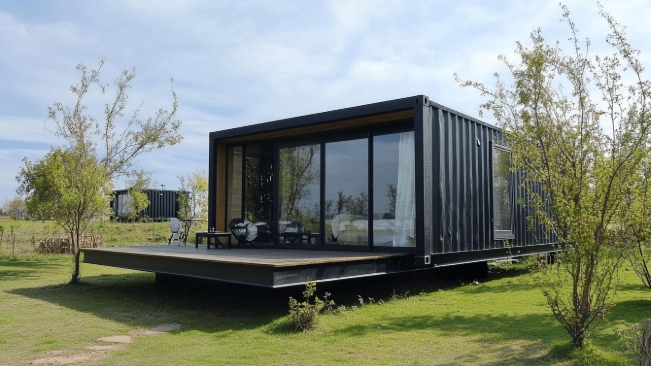Are Container Homes the Future of Sustainable Living?
As housing affordability and climate concerns escalate, container homes are emerging as a revolutionary solution. These adaptable, eco-conscious dwellings—built from repurposed steel shipping containers—merge affordability with innovation. From compact urban studios to sprawling rural retreats, container homes are redefining modern living across the United States.
Why Container Homes Are Gaining Momentum
The surge in container home popularity reflects shifting priorities in housing. With median U.S. home prices exceeding 400,000,buyers increasingly seek budget−friendly alternatives.Container homes provide aviable path,with basic models priced as low as 15,000. A 2023 industry report revealed that searches for "container home designs" in the U.S. grew by 210% year-over-year, signaling rapid mainstream adoption.
Environmental impact plays an equally critical role. Each container home repurposes 2,500–3,000 kg of steel that might otherwise languish in scrapyards. When combined with solar panels or rainwater harvesting systems, these structures achieve near-zero carbon footprints. Architects like California's Jennifer Siegal have showcased how container homes can slash construction waste by up to 90% compared to traditional builds.
Design Flexibility: From Industrial to Luxe
One of the container home's greatest strengths lies in its modularity. Designers stack, cut, and join containers to create anything from cozy tiny homes to multi-level family residences. Strategic window placements and skylights combat the metal box stereotype, flooding interiors with natural light. For instance, a Texas-based firm recently transformed eight containers into a 3,200 sq ft luxury residence featuring floor-to-ceiling glass walls and a rooftop garden.
Interior customization further elevates container homes. Exposed steel beams and polished concrete floors cater to industrial chic enthusiasts, while reclaimed wood accents and living green walls appeal to nature-inspired minimalists. Modular add-ons—like fold-out decks or retractable staircases—allow owners to adapt their container home as needs evolve.
Navigating the Container Home Journey
Building a container home in the United States requires careful planning. Local zoning laws vary widely—some counties embrace container homes, while others impose strict size or aesthetic rules. Experts recommend hiring contractors experienced in container home modifications, as improper insulation or structural cuts can compromise durability.
Prefabricated container home kits simplify the process, offering turnkey solutions with pre-installed plumbing and electrical systems. DIY enthusiasts, however, often source used containers for 1,500–4,500 each, though retrofitting costs can double initial estimates. Financing remains a hurdle, but specialized lenders like Container Home Loans USA now offer mortgages tailored to these unconventional properties.
Cost vs. Long-Term Value
While upfront savings make container homes appealing, their true advantage lies in lifecycle efficiency. Properly maintained steel structures withstand hurricanes, fires, and termites better than wood-frame houses. Energy-efficient designs—like those using spray foam insulation and passive solar heating—cut utility bills by 30–50%.
Redefining Communities Through Container Homes
From California's Sonoma County to Brooklyn's urban core, container home villages are sprouting as affordable housing alternatives. Nonprofits like Hope on the Horizon use donated containers to build transitional shelters for homeless populations, while luxury developments market "container home resorts" with shared amenities like co-working spaces and organic farms.
In Austin, Texas, the Cargo Community—a 22-unit container home complex—exemplifies this trend. Residents enjoy solar-powered units, communal gardens, and a carbon-neutral lifestyle, proving that container homes can foster both individuality and collective sustainability.
The Verdict: A Housing Revolution in Steel
Container homes are no longer niche experiments—they're viable, scalable solutions to modern housing crises. By blending affordability, durability, and eco-innovation, these steel structures address critical challenges faced by American homebuyers. While regulatory hurdles and lingering stereotypes persist, the container home movement continues gaining momentum.
As architects refine designs and lenders expand financing options, container homes increasingly compete with traditional housing. Whether as primary residences, vacation cabins, or community hubs, their versatility positions them as cornerstones of sustainable living. The question isn't if container homes will reshape our cities—it's how quickly society will embrace their potential.
